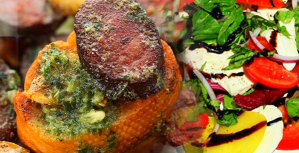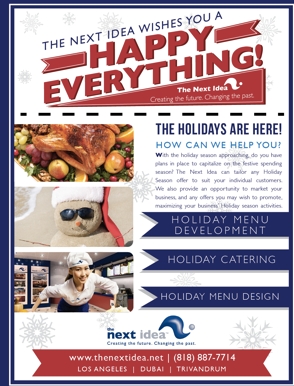Launched in Robert Ancill’s London townhouse with one client in 2001, The Next Idea has emerged as a rarity in the hospitality industry – a full-service restaurant consulting group that creates, maintains and grows concepts around the globe.
Few restaurant consultants are tasked to build establishments worldwide, and even fewer work on that level and specializing in concept creation and development - everything from strategy, brand and product development to design, execution and communication.
Based in Los Angeles with offices in Dubai and India, The Next Idea (TNI) has developed over 78 new concepts, and opened or refurbished more than 750 restaurants and cafes worldwide. Currently, TNI has concept development projects in the United States, Dubai and Abu Dhabi (UAE), Nigeria, China, Saudi Arabia, Lebanon, Bahrain, Qatar, the UK, Mexico, Bangladesh and India.
“That is quite a change from the earliest days when it was just me working alone with one client, but the vision was always to be global, to launch new concepts and re-position existing brands; providing a proprietary support mechanism for clients that is simply not available elsewhere.” said Ancill, who moved The Next Idea to Los Angeles in 2002 with a small group of UK clients. “Yes we are restaurant and Food and beverage experts, but we are also F & B architects, designers, chefs, trainers and management specialists.”
Ancill believes that TNI provides a range of unique Restaurant Creative and Operational services along with high level hospitality consulting products that combine to make client operations more exciting, and appealing to the customer.
“What sets us apart in the industry is ability to fill a niche in the market. Currently if a Client wants a new restaurant they either do it themselves with a group of specialist service providers, or they buy a franchise. The Next Idea sits in the middle of the two traditional options, by providing integrated and highly Creative services along with established and tested operating systems and services. With a TNI program, the client can control the brand with the comfort of an established infrastructure that takes many years to develop. Combined with our passion, depth of experience as innovative food and operations consultants our restaurant solutions have proved to increase frequency, and generate new revenue streams,” Ancill said. “Simply put, our model is becoming increasingly disruptive as we continuously shape the future of restaurant concepts.”
TNI has consulted with some of the world’s most prominent chefs and upscale restaurant groups in addition to working with clients in entertainment, casual dining, fast casual dining, resorts, theme parks and travel. They have also consulted on Spas, beauty salons, health centers, and non-profit ventures.
TNI’s menu of services include restaurant interior design, concept development, creative branding, menu design, training, menu development and engineering, new product launches, operations, human resources, food and beverage software and profit solutions.
Because of our ability to bring together some of the most advanced food and restaurant concepts around the globe, we give clients depth that is rare in our industry,” Ancill said. “We feature the knowledge, experience, creativity, and ability to take account of regional considerations such as the culture and tastes of the local demographics. This is why our skill set becomes invaluable when developing unique concepts adopted for integrated markets.
In 2013, TNI has opened five concepts: Orange & Half Café and Watercress in Bangladesh; Craft Sushi & Noodle Co, Solo Tapas and Skynny Kitchen all in the United States. Next year, TNI has some of its most exciting concepts launching; including a Latino Supper Club and Night Club, a State of The Art Sports Restaurant and a range of new concepts within the travel and tourism industry. The firm’s understanding and embracement of cultural differences will always provide a unique contribute that will elevate every concept’s chances for success, Ancill believes.
“Through our experience in opening restaurants in Bangladesh, for example, we know that people are quick learners and highly motivated, this positive is then enhanced through the welcoming and hospitable culture of the country at large,” Ancill said. “We also understand the challenges, such as very limited access to supplies, the lack of technology with limited support, limited food safety standards and basic safety precautions, challenges in training due to how the culture views gender roles and that simple tasks like obtaining copies of papers made can take several hours of even an entire day.
“Our proprietary systems, unique development and new management model and ability to recognize the culture differences in our various markets around the world give us an advantage that other firms don’t possess,” Ancill added. “This was always the vision from the beginning The Next Idea being a global company and not a regional one.”
Connect The Next Idea –











